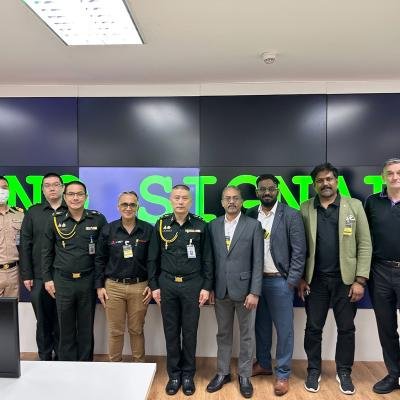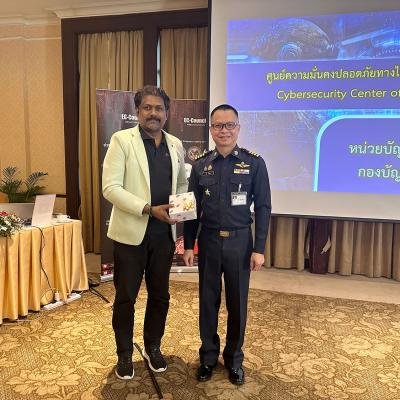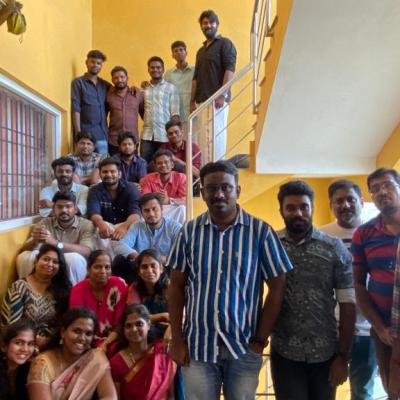Imagine waking up to 80% of your connected infrastructure already compromised.
That’s not a theoretical scenario—it’s a looming reality, thanks to a newly discovered Remote Code Execution (RCE) vulnerability in the Message Queuing Telemetry Transport Control Protocol (MCP). Tracked as CVE-2025-
XXXX, this critical flaw has triggered red alerts across the global cybersecurity community—and with good reason. It’s a ticking time bomb for any business relying on IoT, SCADA, or connected industrial infrastructure. With an estimated 2.5 billion MCP-enabled devices deployed globally—powering smart hospitals, factories, utilities, and logistics systems—the potential blast radius of this vulnerability is enormous. When exploited, it allows unauthenticated remote attackers to seize control of devices, run arbitrary code, steal sensitive data, and move laterally across enterprise networks without detection.
At DigiAlert, we’ve already seen warning signs:
IoT-targeted attacks surged 300% in 2024, and this latest vulnerability could make 2025 a breakout year for MCP-focused cybercrime.
Let’s explore what makes this threat so critical, what sectors are most vulnerable, and how you can take swift action to protect your assets—before it's too late.
Understanding MCP: The Backbone of Smart Systems
The MCP protocol, often confused with MQTT (Message Queuing Telemetry Transport), is a lightweight communication standard built for low-bandwidth, high-latency environments—perfect for IoT ecosystems. MCP enables real-time, bidirectional communication between connected devices and centralized servers. It’s fast, scalable, and efficient—but unfortunately, security was not a design priority.
MCP is widely used in:
- Smart factories controlling sensor-driven automation
- Healthcare environments, from patient monitors to smart infusion pumps
- Energy infrastructure, including smart grids and meter telemetry
- Transport systems, including connected trains and aviation sensors
- Military & aerospace systems that demand low-latency data relays
Its adoption is growing exponentially—but with minimal built-in security controls, it’s also becoming a prime target for exploitation.
CVE-2025-XXXX: A Deep Dive into the Threat
The core issue lies in MCP’s session-handling mechanism. Attackers can send specially crafted packets that overflow memory buffers, enabling unauthorized code execution—all without authentication.
Why it’s a critical threat:
- CVSS Score: 9.8/10 (Critical)
- Attack Vector: Remote (over public or private networks)
- Authentication Required: No
- Impact: Full system control, lateral access, persistent malware injection
Because of its low attack complexity, even amateur threat actors can automate exploitation. Combine this with the number of internet-facing MCP devices, and the scale of risk is unprecedented.
Who’s Affected?
DigiAlert’s Threat Intelligence team quickly scanned for exposure and found vulnerabilities across multiple critical infrastructure sectors, including:
- Healthcare: MRI machines, insulin pumps, patient monitors
- Manufacturing: SCADA systems, PLCs, robotic control arms
- Utilities: Smart meters, grid diagnostics, environmental sensors
- Transportation: Aviation telemetry, railway signaling systems
- Defense: Tactical battlefield IoT nodes and telemetry platforms
In all cases, attackers could gain persistent access—allowing them to disable devices, extract data, or use compromised systems as launchpads for broader network attacks.
The Threat Landscape is Evolving—Fast
Just 48 hours after CVE-2025-XXXX was disclosed, DigiAlert observed:
- 2,100+ unique IP addresses scanning for vulnerable MCP ports
- 45% of unpatched MCP devices beaconing to known C2 (Command & Control) IPs
- Exploit code and payloads being shared on dark web forums and Telegram hacking channels
- LockBit 3.0 and Black Basta ransomware groups integrating the vulnerability into their initial-access toolkits
This is no longer a future problem—it’s unfolding in real time.
How DigiAlert Is Responding
At DigiAlert, we immediately activated our Incident Response and IoT MDR (Managed Detection & Response) teams to address the MCP threat across client environments. Our actions include:
- Deploying global MCP honeypots to study attacker behavior and gather real-world indicators of compromise (IOCs)
- Creating YARA and Snort rules for MCP anomaly detection
- Conducting firmware analysis on high-risk devices across vendors like Siemens, GE, Medtronic, and Schneider Electric
- Notifying enterprise and infrastructure clients with tailored patching and segmentation guidance
Our telemetry data shows a 5X spike in anomalous MCP traffic, primarily originating from Eastern European and APAC-based actors, signaling coordinated reconnaissance.
What You Can Do Right Now
This is not the time for delay or hesitation. Organizations must act quickly and decisively to secure their MCP-enabled infrastructure.
1. Patch Immediately
Vendors are releasing firmware updates, but adoption is lagging. Prioritize patching public-facing and critical-function devices now.
Action Tip: Maintain a real-time device inventory to identify and patch all MCP-based assets—especially those with internet exposure.
2. Segment Your Network
Flat networks are dangerous. Isolate MCP devices to prevent them from acting as pivot points.
Action Tip: Use VLANs or software-defined networking (SDN) to isolate OT from IT networks. Apply firewall rules to restrict cross-segment traffic.
3. Enable 24/7 Monitoring & Threat Detection
Don’t wait for alerts—hunt threats in real time.
Action Tip: Use deep packet inspection (DPI) and anomaly detection tools that inspect MCP traffic. If needed, outsource to an MDR provider like DigiAlert for constant visibility.
4. Run Simulated Attacks
Test your response readiness with real-world threat simulations.
Action Tip: Conduct purple teaming exercises using MCP-specific attack scenarios to train your teams under pressure.
Beyond MCP – A Broader Wake-Up Call
This isn’t just about one vulnerability—it’s a systemic security crisis.
The MCP flaw reveals a bigger issue: many organizations still treat IoT and OT security as secondary concerns. That approach is no longer sustainable.
Start with these truths:
- Legacy protocols like MCP and Modbus are still widely used—but often unaudited.
- Hardcoded credentials, default settings, and open ports are still rampant in OT environments.
- Many security teams lack visibility into firmware-level vulnerabilities.
Consider These Stats:
- 72% of organizations with MCP deployments lack a current asset inventory
- 64% of OT environments still run devices with default or hardcoded credentials
- Only 18% of companies perform regular firmware audits
- The average patch cycle in industrial environments is 63 days
These numbers should concern any CISO, security leader, or infrastructure stakeholder.
DigiAlert’s Commitment to Secure Connected Ecosystems
At DigiAlert, we’re working with clients across India, North America, the Middle East, and Southeast Asia to build cyber-resilient, visibility-driven architectures for the modern age. Our services include:
- vCISO advisory and policy implementation
- 24/7 MDR for IoT/OT/SCADA
- Protocol-specific pentesting
- Red team exercises and crisis simulations
- Custom threat intelligence feeds for industrial systems
We believe the key to defending against tomorrow’s attacks is visibility, agility, and continuous testing—and we’re helping clients implement these principles daily.
Are You Prepared for the Next MCP-Level Threat?
Let’s be honest—MCP won’t be the last protocol to get cracked open.
If your organization hasn’t adopted a proactive cybersecurity strategy, the next critical flaw could hit even harder.
Ask yourself:
- Have we patched all known MCP vulnerabilities?
- Are we monitoring traffic and device behavior in real-time?
- Can we respond quickly to a zero-day exploit across hundreds of endpoints?
If not, the time to act is now—not after your infrastructure is paralyzed.
Ready to Secure Your Smart Infrastructure?
Comment below with your current IoT/OT security approach or concerns
- Follow DigiAlert for real-time cybersecurity alerts, threat breakdowns, and strategic insights
- Follow VinodSenthil for executive analysis on emerging vulnerabilities and digital defense strategies







